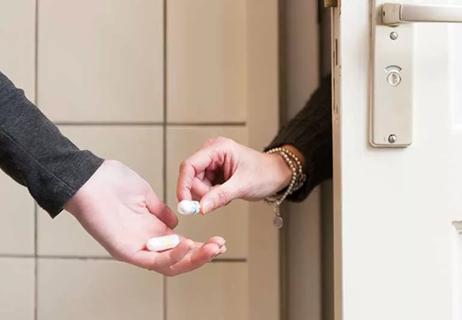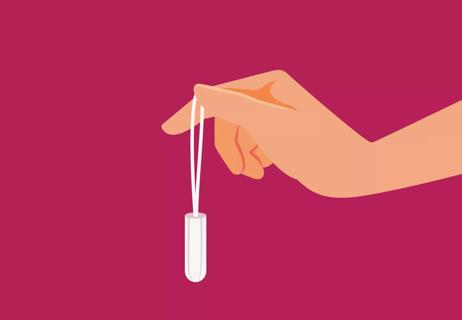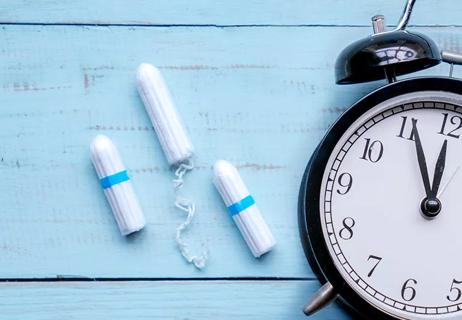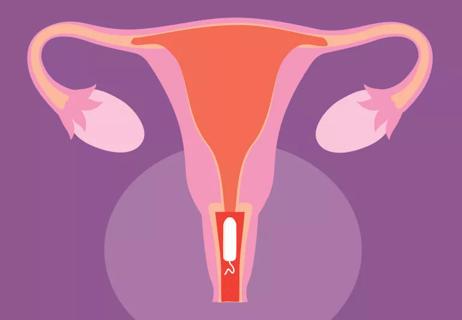Yes, with the right absorbency level and maximum time-frame

From late-night cramps to menstrual migraines, getting a good night’s sleep while on your period can be challenging for a lot of reasons. But one thing you want to be able to count on is that your flow is under control while you’re snoozing.
Advertisement
Cleveland Clinic is a non-profit academic medical center. Advertising on our site helps support our mission. We do not endorse non-Cleveland Clinic products or services. Policy
That’s why you may be wondering if it’s safe to sleep with your tampon in.
The short answer is: Yes, you can sleep with a tampon in. But it’s important to pick the tampon with the right absorbency for you and not wear any tampon for longer than eight hours.
Ob/Gyn Stacie Jhaveri, MD, dives more into sleeping safely with a tampon.
It’s understandable that sleeping with a tampon can be more comfortable than sleeping with a pad for some people. But at the same time, you may be leery about leaving it in overnight — is it as risky as falling asleep with your contacts in?
You can rest assured that overnight tampon use is considered safe if you follow a few guidelines — and that includes changing your tampon right before you hit the hay.
“In order to maintain safety, you should always put in a new tampon before bed,” states Dr. Jhaveri. “Also, make sure that it’s a tampon that fits the heaviness of your flow.”
Your flow may vary based on what day of you’re period you’re on or whether or not you’re on certain contraception. Be sure to pick the tampon with the right absorbency for you — not too little and definitely not too much — or you can increase your risk for toxic shock syndrome.
One of the main cautionary tales you may have heard about leaving a tampon in too long is that you may develop toxic shock syndrome (TSS). TSS is a very rare, but very life-threatening bacterial infection.
Staph bacteria, strep bacteria or clostridium sordelli can cause TSS. “Since your vagina already contains natural bacteria, you may think that the bacteria will stay trapped there by a tampon — but this isn’t necessarily true,” notes Dr. Jhaveri.
Advertisement
The presence of a tampon gives bacteria a new place to grow and can encourage the overproduction of both good and bad bacteria. This is why it’s important to change your tampon at least every eight hours.
Plus, it’s not just about how long you leave your tampon in but also the type you use. “Developing TSS is more likely to happen if you use a more absorbent tampon than what’s actually needed,” Dr. Jhaveri warns.
Wait — back up, isn’t a more absorbent tampon good for your vagina? Actually, not at all.
“I always recommend inserting a tampon that fits your flow,” points out Dr. Jhaveri. “If you use the most absorbent tampon for a very light flow, chances are, you’ll think about changing it less often. You’ll also run the risk of drying out your vaginal mucus, allowing room for more bacteria to enter the body.”
So, when considering using a tampon overnight, if you change your tampon right before you go to bed, use the proper absorbency and change it after eight hours (at the maximum), you’ve minimized your risk for TSS.
It also might be reassuring to learn that TSS isn’t directly associated with tampon use. In fact, TSS can develop any time bacteria enters your body through a cut or burn, or with viral infections like cold and flu.
In relation to tampons, TSS is no longer as common as it once was due to the fact that the U.S. Food and Drug Administration (FDA) pulled tampons off the shelves that contained ingredients like polyester foam and carboxymethylcellulose.
“Developing TSS is rare,” Dr. Jhaveri reassures. “In fact, the main issue I see in patients who leave their tampons in too long is an unpleasant vaginal odor.”
If you choose to use a tampon overnight, know that it’s a safe option available to you. If you accidentally fall asleep with one in, don’t panic. Just be sure to change it first thing in the morning and plan ahead for the next night you have a heavy flow.
Here are some general things to know at bedtime when you’re on your period:
If you follow these tips — which are basically the same rules of thumb you should follow for the daytime — you can sleep soundly with a tampon in.
Advertisement
Learn more about our editorial process.
Advertisement

It depends on your menstrual flow, and a little trial and error

There are better — and healthier — ways to be environmentally friendly

From using one at night to how often you should change them

Use them within five years and store them someplace cool and dry

They won’t make your cramps worse or stretch out your vagina!

In addition to toxic shock syndrome, you risk other vaginal infections

Key steps include picking the right level of absorbency and inserting it at the correct angle

It can get squished and lodged, but not lost

If you’re feeling short of breath, sleep can be tough — propping yourself up or sleeping on your side may help

If you fear the unknown or find yourself needing reassurance often, you may identify with this attachment style

If you’re looking to boost your gut health, it’s better to get fiber from whole foods